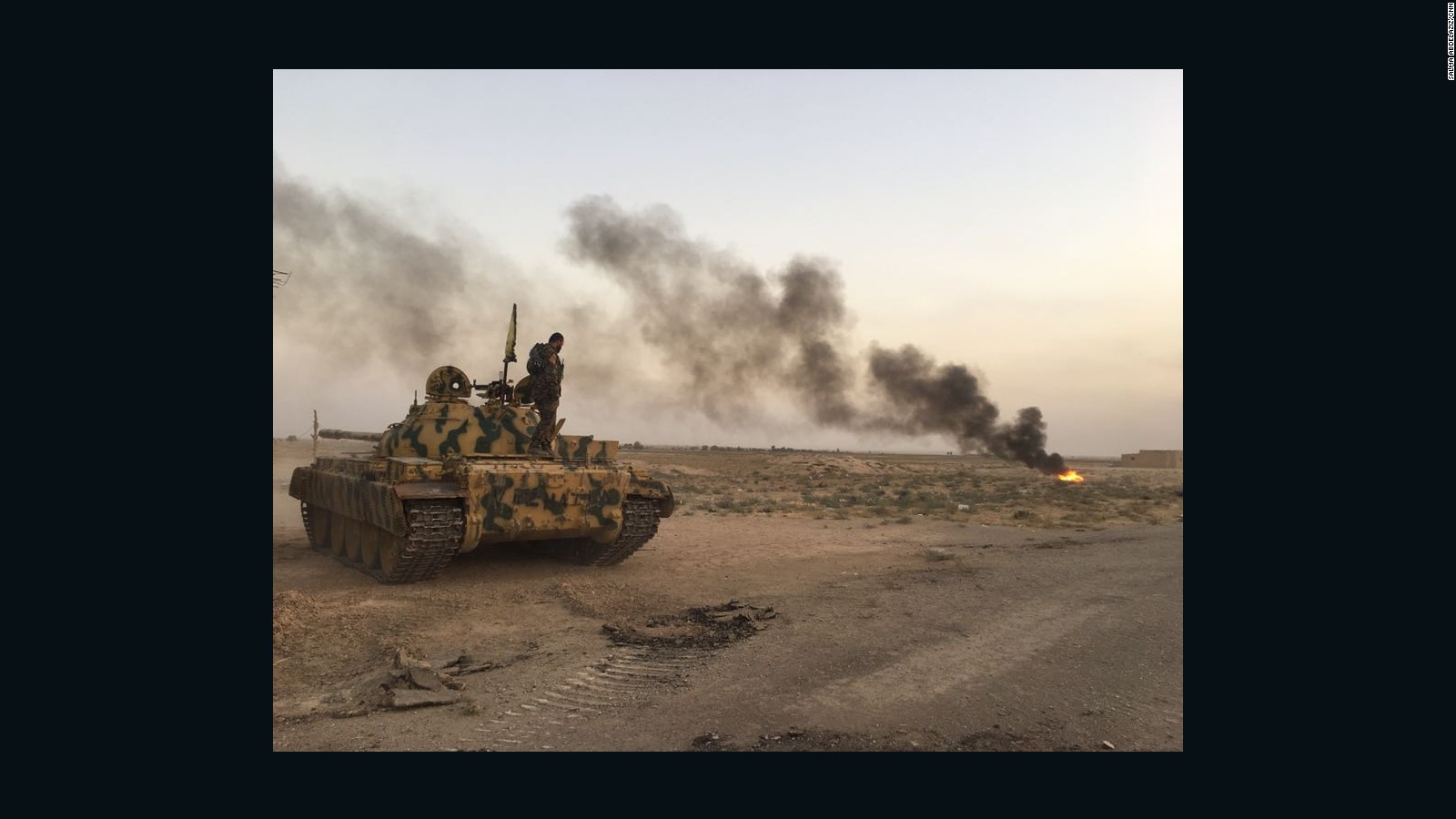Residents flee Deir Ezzor as Russian, SDF forces pound ISIS holdout
Residents flee Syrian town amid bombings 02:58
Near Deir Ezzor, Syria (CNN)It
should be the height of tension: a final pocket of ISIS, under heavy
bombardment, where leader Abu Bakr al-Baghdadi could possibly be hiding
and from which civilians pour out daily.
A
new frontline in the war in Syria and a standoff between forces backed
by Washington and Moscow with competing agendas, mere meters apart.
But
instead, a CNN team accompanying Syrian Democratic Force fighters into
newly-seized ISIS territory found a serene scene, in which the thud of
explosions wasn't from the Russian airstrikes a few kilometers away but
from hand grenades, thrown in the river to kill and catch fish.
This
is the end phase of the fight against ISIS -- a series of new
challenges and possible conflicts. Twenty-four hours earlier the SDF had
moved south to the Euphrates River, kicking ISIS out of a pocket of
Deir Ezzor's surrounding countryside and bringing their forces within
shouting distance of the Syrian regime and the Russian military
assisting them.
Not
that shouting is required, we were told -- the two sides regularly meet
so Russian advisers and the SDF can be sure they don't accidentally
clash on the battlefield. In the skies above, coalition jets make large
loops before they hit the deconfliction line around Deir Ezzor, being
sure to not accidentally enter the airspace the Russians and regime are
flying in.
So
now comes the question of who will take over the territory that for the
last three years has been the self-declared ISIS caliphate. For now,
the SDF and their new neighbors are relatively friendly: There has been
one rocket that injured four SDF and killed one, said a SDF commander
who was not authorized to speak officially. It was unclear who fired it
-- the regime, Russians or Iranians -- and the two sides seem focused on
the task of polishing off ISIS, for now.
Yet
this relaxed riverside idyll is a world away from the sheer hell Deir
Ezzor is seeing right now. It is unclear how many civilians are left in
the city, yet its battering from above remains palpable and relentless.
The shells never seem to stop.
Some
are able to flee the city, but most have come from the outskirts, they
say. Gathered in the dust of the desert around the city, these
beleaguered people are haunted by a cloud of suspicion: Are the ones who
leave ISIS territory last the most loyal to the group, or the least
fortunate?
Still, their stories
carry the template of horror from this war. Bashir Elmelham says: "We
heard the call of war from the minaret and the shells and artillery came
pounding down on us like heavy rain. We fled to abandoned lands."
Suddenly,
as they escort us across the desert, the SDF fire a warning shot. A
motorbike is approaching, and this could be a suicide bomber. The nearby
checkpoint where the SDF screen the displaced from Deir Ezzor was hit
by a suicide bomber just 10 days ago. They wave the biker away, and he
departs.
At the checkpoint itself
-- a simple process of unloading, searching and reloading belongings
from the backs of battered trucks -- ISIS are regularly found.
Distinguishable often by the explosives they carry, or pointed out by
informers in their midst, the SDF at the checkpoint we visit say they
found 30 the day before.
Recently
it was two Tunisian men, carrying five suicide belts, and accompanied by
15 women and children. A week earlier, the SDF clashed for three hours
with a convoy of ISIS trying to escape. This is the new phase of the war
against ISIS for the SDF -- distinguishing their enemies from the
civilians they are now trying to help.
Everyone
is covered in white sand except for circles around their eyes. Some
have slept in open desert for days with little access to food or water.
Ten-year-old Yousif, wearing a Spider-Man T-shirt, is among them. He says he prefers the desert to being back home.
"When
I would hear the shelling, I would hide in the ground," he says. "The
hardest part about living here is that I am not at home."
These
families are some of Syria's most disenfranchised. Many are poor,
uneducated laborers or farmers who lack a TV, so aren't even sure why
they are being bombed. or by who.
Juwhar
comforts her infant child in her arms as she tells us: "We saw
everything in my village. Airstrikes. Children and elderly dying -- my
relative just last week. The children wouldn't stop crying from fear. I
could only stand there. What could I do? I don't know if our home is
still standing or even who is bombing us."
In the distance, the thud of shelling continues. The women are laying out carpets near their trucks for the night.





No comments:
Post a Comment